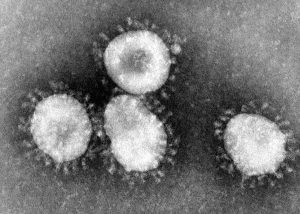
The Genetics of Coronavirus
In early December, an outbreak of respiratory illness was reported in Wuhan, China. Scientists quickly determined the sickness was caused by a new virus from the coronavirus family. In an attempt to limit the spread of the virus, China has reacted with transportation lockdowns and public health advisories. However, the number of people infected and the death toll continue to climb. As cases appear around the globe, the world is bracing for a possible pandemic, but what do we currently know about the virus causing so much concern?
On all levels, there are still more questions about this virus than answers, but data is starting to emerge. Let’s explore what researchers have learned so far about this disease that resembles a type of viral pneumonia.
 Origins
Origins
One of the first questions people ask is: where did the virus come from? The current strain of coronavirus has been traced back to an animal market in Wuhan, China. This suggests that the virus possibly emerged from an animal source. However, the specific transmission that created the outbreak isn’t yet known.
Barely one month after the first case was reported, researchers sequenced the genome of the causative virus, called 2019-nCoV. Nearly 29,000 nucleotides—A’s, T’s, C’s and G’s—make up the coronavirus instruction book. As additional samples are collected and sequenced from other patients, researchers have been publicly sharing the results, working collaboratively to uncover details about the origin and workings of the virus. This sharing has also allowed laboratories to develop diagnostic tests to detect the virus, which was how the CDC was able to confirm the presence of the first case in the United States.
At this point, the data suggest 2019-nCov shares significant similarity with coronaviruses found in bats, but the sequences have a series of genetic differences. Many researchers suspect that the virus may have passed through one or more species of animal before being transmitted to humans, acquiring these genetic changes along the way.
Family of Viruses
This 2019‐nCoV strain of virus comes from a large family of other coronaviruses—so named because proteins studded across their surface stick up like the points on a crown. Most people will get coronavirus infections during their lifetime. In fact, the common cold is often caused by a coronavirus. These viruses usually lead to mild upper respiratory infections, although some can cause more serious illnesses like bronchitis or pneumonia.
 The 2019-nCoV is not the first coronavirus to spark a global panic. Many might remember the uproar about severe acute respiratory syndrome (SARS) in 2003 and Middle East respiratory syndrome (MERS) in 2012. Both of those diseases stem from coronaviruses.
The 2019-nCoV is not the first coronavirus to spark a global panic. Many might remember the uproar about severe acute respiratory syndrome (SARS) in 2003 and Middle East respiratory syndrome (MERS) in 2012. Both of those diseases stem from coronaviruses.
The fact that 2019-nCoV is a coronavirus does give some hope of a vaccine. Time notes that scientists developed a SARS vaccine, which could potentially be adapted to handle this new coronavirus. Such an effort would require time, but at least the virus has already been sequenced which makes things easier.
A World Bracing
Devastating viral pandemics have swept the globe multiple times throughout human history, so it’s natural that people treat the outbreak of new diseases seriously. We still have a lot to learn about 2019-nCoV. For example, in the earliest stages, scientists don’t know how it is transmitted between people, how it gains entry into human cells, how long it is infectious, how rapidly the virus is mutating, etc. That said, researchers, including some at HudsonAlpha, have already started to unravel some of the genetic mysteries of this virus. Hopefully continued research will convert our knowledge into treatment and prevention options.


